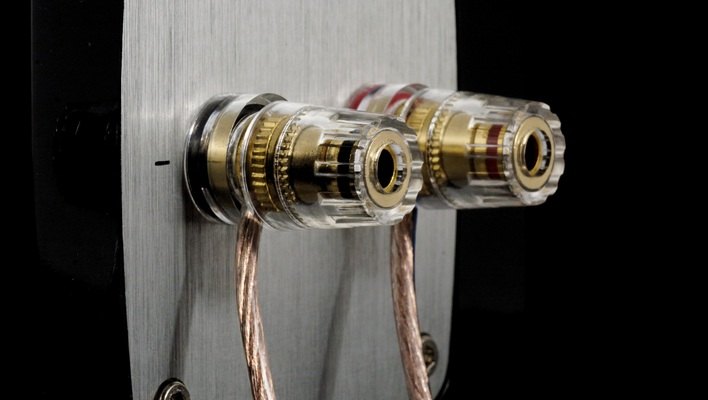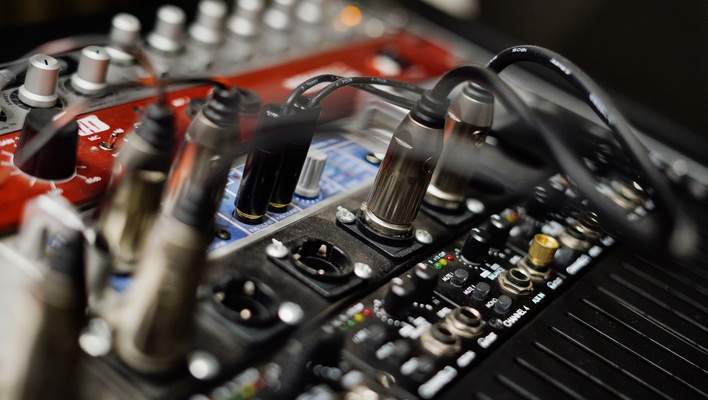Harvesting every bit of audio quality from an audio system is every audiophile’s dream. Unfortunately, all speakers come with various components that vary in both quality and performance. Car audio and home entertainments are yet to achieve total satisfaction due to the sheer nature of recurring problems regarding sound quality.
For instance, what the amplifier has strained to achieve, the For instance, what the amplifier has strained to achieve, the speakers might undermine due to the type of speaker wire and the quality of the transmitting cable elements.
Most sound systems today come without a cable to transmit audio signals from the power amplifier to the receiving speaker. Although this presents an excellent opportunity to add a personal touch, choosing the right speaker wire can be a little hectic.
First things first, the speaker cable’s size can heavily impact the quality and volume of sound. This article will explore the factors considered when choosing speaker cables and give you an in-depth understanding of the 14 AWG vs 16 AWG speaker wires.

What’s AWG?
AWG refers to the American wire gauge, an index that specifies the electrical resistance, area, diameter, and frequency transmission. The Brown & Sharpe Company created the AWG in the mid-1800s. In 1857, the standard was adopted and implemented as an official industry-standard sizing.
Companies that manufacture speaker cables pull metal blanks through a wire die several times to get accurate diameters. For instance, a 14 AWG wire cable has been drawn through 14 sizing dies while the 16 AWG wire cable has been drawn 16 sizing dies.
Therefore, a 14 gauge is a thicker wire than the 16 AWG.
16 AWG Speaker Cable
Anyone with a soft spot for good music knows the benefits of using the correct wire gauge.
A 16 AWG wire has a diameter of 1.29032mm, translating to a cross-section area of 1.31mm2. The cable will offer you 22 maximum amperes for chassis wiring and 3.7 maximum amperes for power transmission. The breaking force for 16 gauge copper wire is 75 lbs.
You can use the 16 AWG to power high-impedance speakers (8 ohms) over shorter wire runs (less than 50 feet). Additionally, they are affordable for short runs during indoor and underground wiring.
Some 16 AWG cables, such as Musician’s Gear, offer a 16-Gauge Speaker Cable 4-Pack. The copper wires used to construct Musician’s Gear cables are oxygen-free with a 2-conductor. Thus, they’re ideal for short-run monitors. Musician’s Gear 16-Garage Speaker Cable construction prevents low noise and ultra-low signal resistance despite being an affordable model.
Experts recommend 16 gauge cords for stereo speakers and moderately-powered sound systems (below 225 Watts) to achieve optimum performance.
Pros
- They’re highly recommended to pass audio signals from power amplifiers to speakers over short runs.
- They are ideal for short-run monitors.
- Affordable model to use for your audio needs.
- Audio systems experts recommend 16 AWG for home theater speakers.
Cons
- 16 AVG cables are not efficient when used over long distances.
14 AWG Speaker Cable
Unlike the 16 AWG, the 14 AWG speaker cable seeks to prevent loss of power within long wire runs. This gauge is efficient when used in high-power applications such as 2 or 4-ohm subwoofers. You can use 14 gauge speaker cables for various audio solutions ranging from digital audio and stereo speakers to home theater speakers.
Manufacturers usually construct 14 AWG wires from two different conductors (tin and bare copper), which helps distinguish polarity. Additionally, it’s covered by a translucent PVC jacket cover for easy installation.
A 14 AWG wire has a diameter of 1.62814mm, translating to a cross-section area of 2.08mm2. The cable grants you a maximum of 32 amperes for chassis wiring and 5.9 maximum amperes for power transmission. Lastly, the breaking force for 14 gauge copper wire is 119 lbs.
You can use the 14 gauge cord for long runs beyond 50 feet when running 120 volts without degrading the audio sent to the speakers. Remember, impedance reduces with an increase in wire thickness.
Pros
- They are efficient speaker cables for high-power audio systems.
- Perfect speaker cable for wiring long-wire runs.
- Easy installation of wires.
Cons
- Not advisable for in-wall wiring

14 vs 16 Gauge Speaker Wire Selection
Stuck between a 16 gauge vs 14 gauge for your home theater system? Some of the common factors to consider when choosing between 14 AWG vs 16 AWG are:
The Cost
The thicker the wire, the higher the cost. Copper is the standard material for speaker wires. Thicker wires are more expensive because they use more copper material in the manufacturing process. Therefore, 12 and 14 AWG cables are more costly than the 16 gauge wires.
Speaker’s impedance rating
Speaker impedance refers to the resistance to the flow of a current. A lower impedance rating means electrical signals in sound can pass through the speaker with ease.
Low-impedance speakers with a 4 or 6 ohms rating call for thicker speaker wires (12 or 14 AWG). 8 or 16-ohm speakers, on the other hand, perform well with 16 gauge wires. However, the impedance becomes a real deal when you connect two or more speakers to an amplifier.
For instance, connecting four 4-ohm speakers to one amplifier generates a total impedance of 1-ohm. One ohm is way too low for your power amplifier. Therefore, you’ll need to use a speaker selector with impedance matching.
Distance Between Sound Speakers and Source
The distance between the sender and receiver should tell you which tThe distance between the sender and receiver should tell you which thickness to choose. The 12 AWG or 14 AWG speaker wires are crucial, especially when using long or very long wire runs.
Let’s analyze a 14 gauge vs 16 gauge wire in terms of distance. You’ll note that connecting a 14 AWG wire to a 6-ohm speaker for wire runs of around 50 feet is possible for optimum performance. A 16 AWG should secure a 6-ohm speaker within a 36 feet distance.
When using 8-ohm speakers, you’ll use a wire run distance of 80 feet and 48 feet for 14 AWG and 16 AWG, respectively.
You may also Read: Klipsch SPL-150 vs. SVS PB-2000
Wrapping Up
The correct gauge size for your speaker cable should complement your speaker systems. Choosing between 16 AWG vs 14 AWG is a matter of choosing between efficiency and affordability.
If you’re looking for speaker wires for your car’s subwoofer, perhaps you can settle for a thinner 16 AWG wire that’s affordable. Alternatively, thicker 12 AWG or 14 AWG wires offer high power when used over long wire runs.
Remember, the best cable is that which meets your user, economic, and sound needs!

